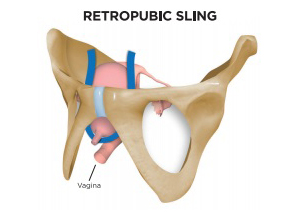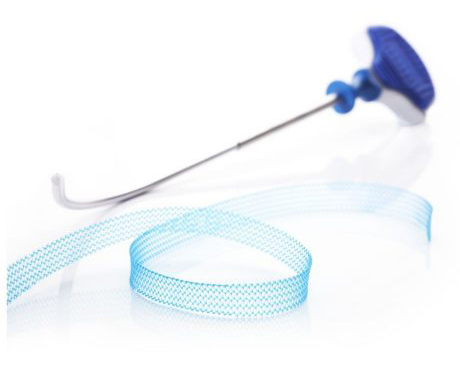
What is a Mid-Urethral Sling?
A Mid-Urethral Sling is a polypropylene mesh that is surgically placed to support the natural continence mechanisms of the urethra. Three types are available; retropubic, transobturator, and “mini” slings. These differ in how they are placed, but all serve the same role of supporting the urethra to treat stress urinary incontinence. Mid-urethral slings are different from trans-vaginal mesh and are considered safe by the FDA.
Why might I need a Mid-Urethral Sling?
A mid-urethral sling is a common procedure performed for stress urinary incontinence in women. Stress urinary incontinence is leakage of urine during coughing, sneezing, or any other activity that increases abdominal pressure. This procedure is common, highly effective, and safe.
Preparing for your Sling:
In general, preparation for a Procedure will involve the following steps:
- You will have bloodwork and other testing done at the hospital
- The hospital will call you to confirm arrival time and instructions
- You will be asked if you have allergies to medications, anesthesia, or latex.
- You should inform your doctor of any medications, vitamins, or supplements that you are taking.
- You should refrain from taking anti-inflammatories or blood-thinning medications a week prior to the procedure. Any blood thinning medications will be discussed with you and your doctors
- It is also important to inform your doctor if you are pregnant or might be pregnant, diabetic, asthmatic, or have any other medical conditions.
- You may be asked to refrain from eating 8 hours prior to your scheduled arrival time and drinking 2 hours prior to your arrival time.
- You should remove all metal objects and accessories such as eyeglasses, jewelry, watch, etc. as they can interfere with the imaging technique used.
- You should arrange for someone to drive you home after the procedure.

What happens during a Sling Placement?
During the procedure several steps will occur:
- An anesthesiologist will give you medication to induce anesthesia
- You will be positioned in a similar fashion to a pelvic exam
- A urinary catheter is placed
- A small incision is made in the front wall of the vagina
- Two small incisions are made in the lower abdomen
- The mesh is passed from the bottom incision to the top incision
- A camera is placed into your bladder to confirm appropriate position of the sling
- The incisions are closed
- The urinary catheter is removed
- You wake up in the recovery room and urinate prior to going home
What can I expect after my Mid-Urethral Sling?
Most women experience immediate improvement in their stress urinary incontinence, with around 80% of women no longer requiring pads. This is usually stable over many years. Some discomfort in the vaginal area is normal, and spotting may be seen after the procedure.
You should not put anything into your vagina for 1 month after your procedure. You should not perform any heavy lifting for two weeks after your procedure.
You should be able to resume all of your other normal activities immediately.
What are the risk of Mid-Urethral Sling Placement?
Mid-urethral sling placement has risks common to all surgery, of bleeding, infection, and injury to local structures, but all these complications are rare.
A small portion of women will not be able to urinate after the procedure and will require catheter placement for a short period of time. If this persists, in rare cases a second procedure to loosen the sling may be required.
In the long term, it is possible for the mesh to erode into local structures, in which case the eroded portion would need to be removed. This is rare.
